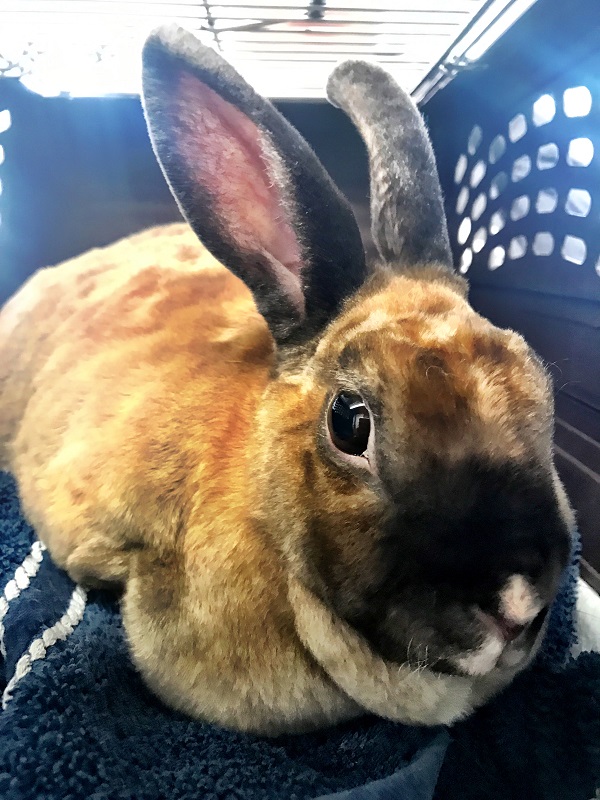Rabbit – Urinary calculi (stones)
- March 27, 2017
- Posted by: Dr. Diaz
- Category: Patients
Tobie is a 5 year old intact female that came to our hospital for evaluation after her owner noticed she was not eating normally, was slightly lethargic, and was not using her litter box as she normally does. Her physical exam revealed she had a normal temperature and vitals, but she was overweight and it was painful when her lower abdomen was palpated.
We obtained radiographs (x-ray) and determined Tobie had a large stone in her bladder.
Urinary stones occur most commonly in obese sedentary rabbits 3 to 5 years of age. Animals like rabbits, guinea pigs, elephants and horses, excrete excess calcium in their diet through the urine. Most other mammals excrete excess calcium in their stool. In sedentary rabbits, calcium salts precipitate and therefore are not removed when the animal urinates. This predisposes rabbits to bladder sludge and the formation of stones in the urinary tract.
There are many factors that can induce the development of urinary stones, including anatomic abnormalities, infection, metabolic disorders, inadequate water intake, urine retention, inadequate cleaning of the litter box, obesity, lack of exercise, renal disease and calcium supplements.
Rabbits, like several other prey animals, tend to hide clinical signs when in pain or discomfort. Clinical signs that can be seen at home can include bloody urine, thick pasty/chalky urine, straining to urinate, loss of appetite, hunched posture, increased respiratory rate, lethargy and decreased activity.
On physical exam, rabbits appear painful when their abdomens are palpated. Diagnostic test that are helpful to reach a definitive diagnosis include radiographs and an ultrasound. Both radiographs and an ultrasound often show stones present in the urinary tract but an ultrasound will additionally aid in the evaluation of the kidneys. Blood work and urinalysis can help rule out any systemic conditions or underlying diseases.
Treatment involves surgical removal of the stones and weight loss. If your pet is on calcium supplements, it would also be a good idea to discontinue them. Medical treatment is not a reasonable solution because there are no known effective dissolution diets. As a result, for large or painful calculi, surgical removal is the best choice. A surgery called a cystotomy is performed, in which the bladder is opened, the stone(s) are removed and the bladder is liberally flushed. A culture of the mucosa of the bladder is obtained to rule out an infection.
Tobie did great during and after surgery. We took advantage and spayed her at the same time to prevent the development of malignant uterine cancer. Look at this big stone we retrieved!!
Tobie has been doing great at home, she has lost some weight and she is a lot more active. Her owner is soaking her vegetables in water to make sure she is better hydrated and plays with her to make sure she exercises.
If you have any questions or concerns regarding urinary stones in rabbits or think your rabbit may be showing clinical signs consistent with those described above, please do not hesitate to call us.




